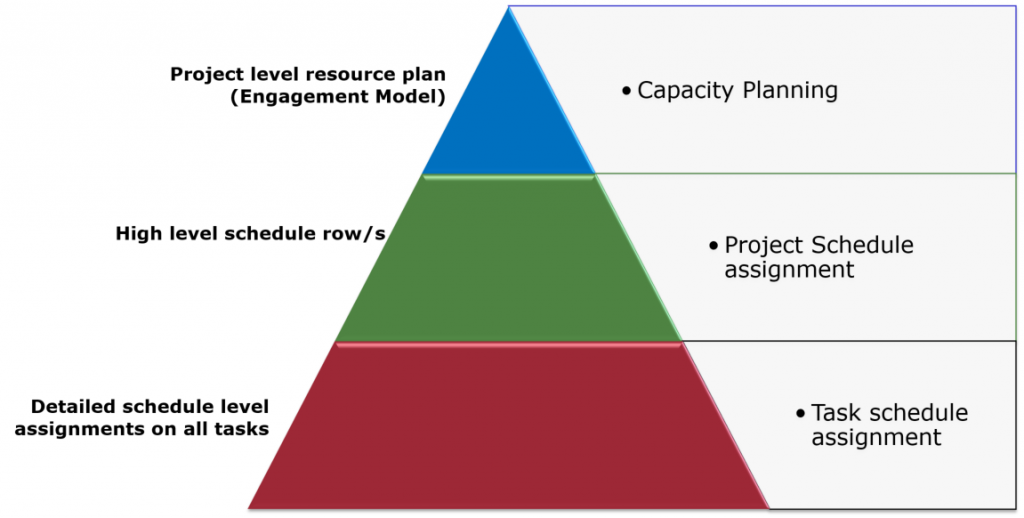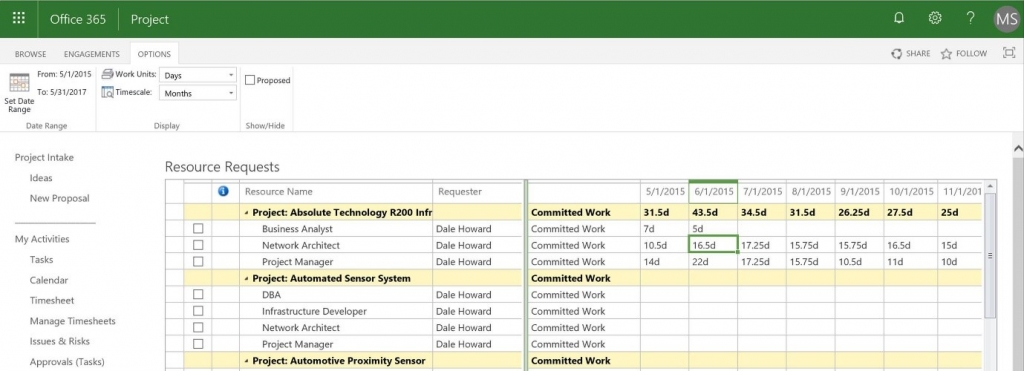Resource management is one of the most challenging components to implement when setting up an enterprise Project and Portfolio Management (PPM) solution. In this blog post we’re covering the three maturity levels of resource management so you can assess where you’re at, and take steps to move on up toward your Resource Management destination.
The inherently tricky nature of resource management means there’s often a wet road ahead to meeting your maturity goals, for example, some of the most common problems we hear from our customers are:
- We don’t have an accurate picture on what our project resource demand is
- I have booked resources to start my project but the day they are meant to start, they get re-assigned and my project is delayed
- Resources turn up for my project with the wrong skill-set
- Nobody clearly knows what they are working on beyond this week
- My team are ready to start the project but there was a delay in the project which wasn’t communicated to us
- We can’t tell if we can complete all the projects we financially committed to this year
- We use contractors in our organisation but don’t know when the best time is to hire them or what role to look for
- Everyone is too busy to follow the resource management process
- Some people are really good at following the resource management process, others… not so much
The list goes on but if some of these sound familiar then don’t worry, you’re not alone.
So how do we implement the right solution for the right organisation?
Well, this is a topic for a much deeper discussion with your specific organisation but mapping your business process to the PPM tool and aligning that to cater to the right level of project maturity your organisation is at. Some of the key ingredients to make this work are:
- A well-defined and communicated resource management process.
- Executive sponsorship and management buy-in
- Everyone involved in the process to be following it
- All work/demand must be entered into the tool otherwise you will never get a full picture
- Assigned representatives to govern the process and ensure the system is kept up-to-date
- Agree on the right level of granularity to manage and be realistic about the first implementation. You can always increase the process maturity in time but if you go in too hard, too fast, you may set yourself up to fail. For example, agree on what is the most important thing to capture first. Resource demand, actuals, assignments, timesheets. Will it be at the generic (role based level) or named level? Ultimately both perhaps but agree on a reasonable starting point your organisation can digest. Do we need to consider other locations or Departments? Is skill-set important to this view? Should we trial this with a closed group or Department to start with?
OK, so let’s talk functional options.
Like most things in life, the more you put in, the more get out. The following diagram indicates key methods to manage resources with low administration overhead at the top of the pyramid, moving down into more administrative overhead lower on the pyramid.

Project level resource plan
The method most often used when first introducing resource management into an organisation. When first scoping out a project idea, most organisations ask for some indication of what resources are required and for how long. It may come in the form of an excel spreadsheet, Business Case, A4 piece of paper or perhaps even the back of a drink coaster from the local pub. As a starting point, an organisation can gain a quick glimpse into their project demand by entering this information into the Project Online/Server tool using this method. Validating the accuracy as the project progresses will need to be managed with an internal process but as a suggestion, align it to either a monthly reporting process, stage gate, key milestone check-in or PMO/Sponsor governance meeting. To remove the administration overhead, elect a representative to sit with Project Managers (PMs) and enter the information directly into the tool and schedule regular meetings to validate it. If you have a Project Management Office, consider assigning that role to someone in that team to support PM’s. Your reward will be a clear picture of the resource demand across the organisation in a relatively short period.
Access this part of the tool by navigating to the Resource Centre, selecting the resource you want on your project (named or generic) and clicking the Resource Requests button.

Switch your view to Timesphased Data and simply create a single engagement (booking) for each of your intended project resources. This part of the tool has additional features which can drive resource requests from Microsoft Project but check out our other blogs on that topic for further details available to the Resource Requests feature.

High level resourcing in the schedule
Another option is to move this information into the project schedule, particularly if you are wanting to represent the cost of the resources as well as the work/effort. For the time-poor Project Manager/Scheduler you can structure your schedule into two levels. The first is for project resourcing and the second section is for the remaining project task structure. The concept for this method is to track resourcing at a high level to reduce administrative overhead and track project task duration and milestones in the lower section. Ensure work is tracked at the resource level only and not in the lower project tasks section otherwise you will duplicate the total project work roll-up. Additional tasks can be created under each resource section if further granularity tracking is required but keep it to a minimum otherwise the next method may be more appropriate for you. With this approach, you can choose to have your resources communicate time back to your project through the web browser. Don’t worry though, nothing goes into your schedule without your approval first.

Detailed schedule assignments and tasks
The more traditional method is to assign resources to your project tasks. For small projects with 50 or so tasks, this may not be an issue, but for more complex projects with hundreds or thousands of tasks, this method of project tracking will require a reasonable amount of time to administer. The benefit in tracking to this level is you will have full control of your project progress and gain valuable insight into the knock-on effects of changes effecting the project at the micro-level. Organisations at this level often have a dedicated project scheduler/planner assigned to maintain and track the schedule with the Project Manager. Like the previous example, actual hours from your project team can be entered directly by the PM or resources can do it themselves through the PPM tool.
The wonderful part of all this is that Microsoft Project Online/Server provides the flexibility to combine these methods based on the individual project or enterprise project types needs so you can mix and match styles to suit your organisation and maturity level and still maintain a holistic picture of what’s happening across the portfolio.

By Piet Remen
Piet has been part of the Sensei team for over 15 years implementing, developing and supporting Microsoft solutions for our Clients across a wide range of vertical sectors. Through his experience Piet has a sound understanding of the challenges many industries face and his combined skills of business acumen and technical abilities provides him with a prime position to recommend realistic workable solutions to relieve business pain points for customers.



